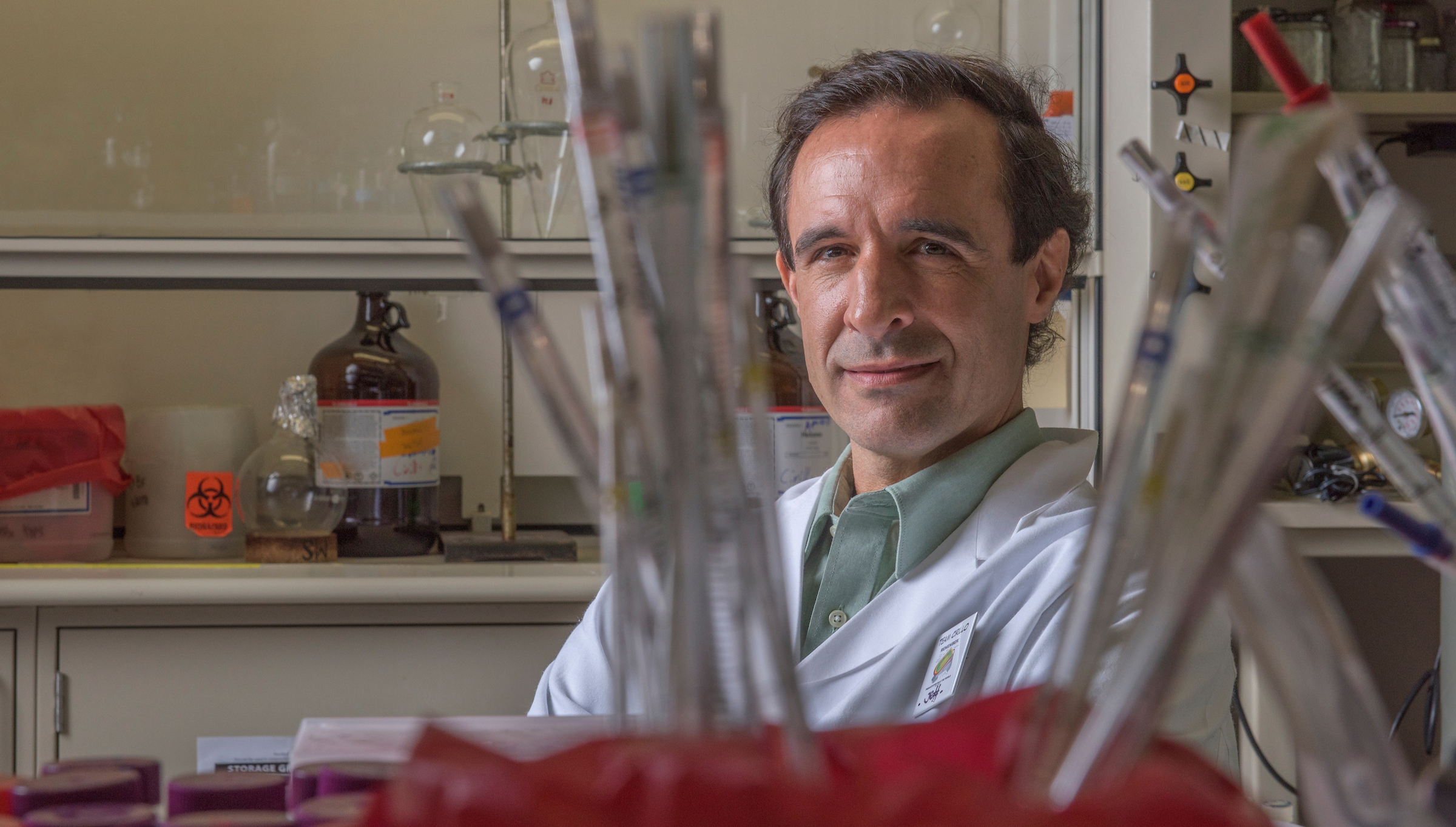- Christina Sumners
- Medicine, Research, Show on VR homepage
Deadly ‘superbugs’ destroyed by molecular drills
Texas A&M, Rice-led research shows motors kill bacteria, revive some antibacterial drugs

Jeff Cirillo in his lab
Molecular drills can now target and destroy deadly bacteria that have evolved resistance to nearly all antibiotics. In some cases, the drills make the antibiotics effective once again.
Researchers at Rice University, Texas A&M University, Biola University and Durham (U.K.) University showed that motorized molecules developed in the Rice lab of chemist James Tour, PhD, are effective at killing antibiotic-resistant microbes—or “superbugs”—within minutes.
“These superbugs could kill 10 million people a year by 2050, way overtaking cancer,” Tour said. “These are nightmare bacteria; they don’t respond to anything.”
The motors target the bacteria and, once activated with light, burrow through their exteriors.
While bacteria can evolve to resist antibiotics by locking the antibiotics out, the bacteria have no defense against molecular drills. Antibiotics that are able to get through openings made by the drills are once again lethal to the bacteria.
The researchers reported their results in the American Chemical Society journal ACS Nano. Former Texas A&M postdoctoral fellow Don Thushara Galbadage, PhD, now an associate professor of public health at Biola, is lead author.
Tour and Robert Pal, PhD, a Royal Society University Research Fellow at Durham and co-author of the new paper, introduced the molecular drills for boring through cells in 2017. The drills are paddle-like molecules that can be prompted to spin at 3 million rotations per second when activated with light.
Tests by the Texas A&M lab of lead scientist Jeffrey Cirillo, PhD, and former Rice researcher Richard Gunasekera, PhD, at Biola effectively killed Klebsiella pneumoniae within minutes. Microscopic images of targeted bacteria showed where motors had drilled through cell walls.
“Bacteria don’t just have a lipid bilayer,” said Tour, who is the T.T. and W.F. Chao Chair in Chemistry as well as a professor of computer science and of materials science and nanoengineering at Rice. “They have two bilayers and proteins with sugars that interlink them, so things don’t normally get through these very robust cell walls. That’s why these bacteria are so hard to kill. But they have no way to defend against a machine like these molecular drills, since this is a mechanical action and not a chemical effect.”
The motors also increased the susceptibility of K. pneumonia to meropenem, an antibacterial drug to which the bacteria had developed resistance. “Sometimes, when the bacteria figures out a drug, it doesn’t let it in,” Tour said. “Other times, bacteria defeat the drug by letting it in and deactivating it.”
He said meropenem is an example of the former. “Now we can get it through the cell wall,” Tour said. “This can breathe new life into ineffective antibiotics by using them in combination with the molecular drills.”
Gunasekera said bacterial colonies targeted with a small concentration of nanomachines alone killed up to 17 percent of cells, but that increased to 65 percent with the addition of meropenem. After further balancing motors and the antibiotic, the researchers were able to kill 94 percent of the pneumonia-causing pathogen.
Tour said the nanomachines may see their most immediate impact in treating skin, wound, catheter or implant infections caused by bacteria—like Staphylococcus aureus MRSA, klebsiella or pseudomonas—and intestinal infections. “On the skin, in the lungs or in the GI tract, wherever we can introduce a light source, we can attack these bacteria,” he said. “Or one could have the blood flow through a light-containing external box and then back into the body to kill blood-borne bacteria.”
“We are very much interested in treating wound and implant infections initially,” said Cirillo, who is a Regents’ Professor and director of Texas A&M’s Center for Airborne Pathogen Research and Tuberculosis Imaging. “But we have ways to deliver these wavelengths of light to lung infections that cause numerous mortalities from pneumonia, cystic fibrosis and tuberculosis, so we will also be developing respiratory infection treatments.”
Gunasekera, who is associate dean of academic and research affairs of the School of Science, Technology & Health and professor of biological sciences and biochemistry at Biola, noted bladder-borne bacteria that cause urinary tract infections may also be targeted.
Co-authors of the paper are postdoctoral researcher Dongdong Liu and research scientist Lawrence Alemany of Rice. The research was supported by the Discovery Institute, the Welch Foundation, the National Institutes of Health, the Biotechnology and Biological Sciences Research Council, U.K., and the Royal Society University Research Fellowship.
Media contact: media@tamu.edu


